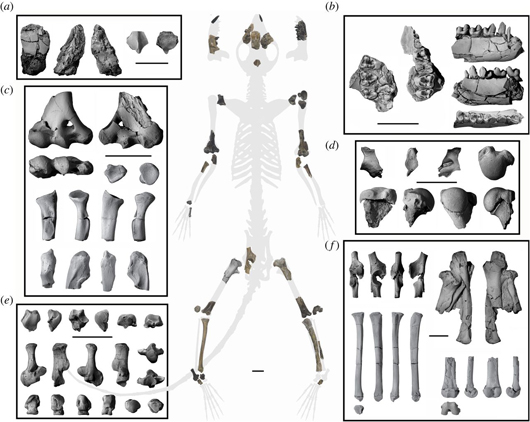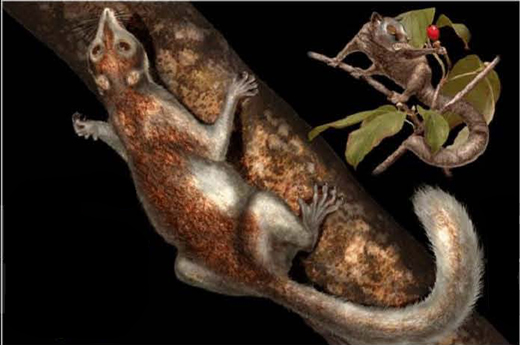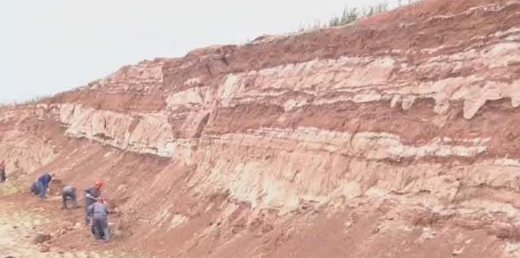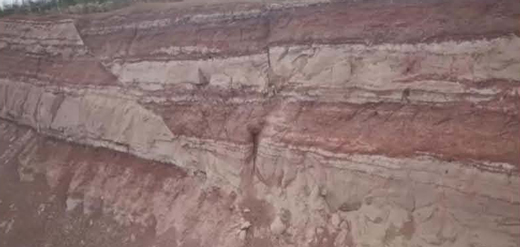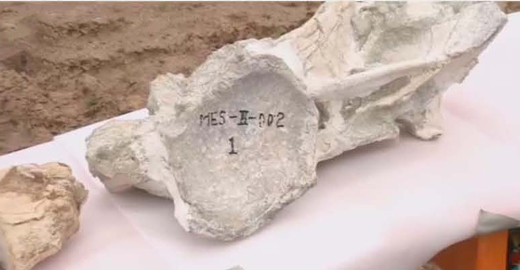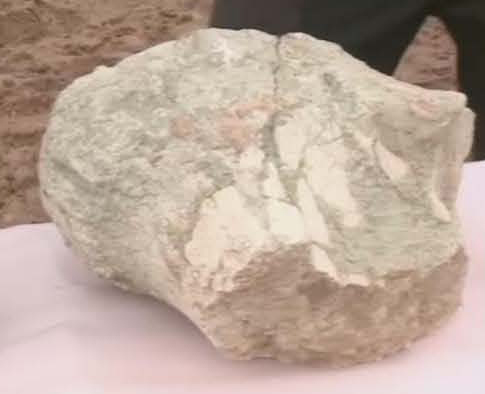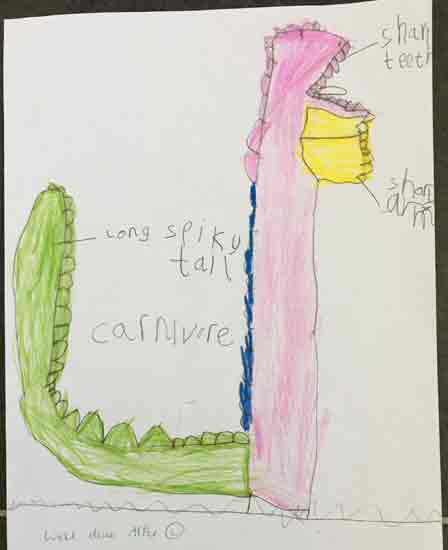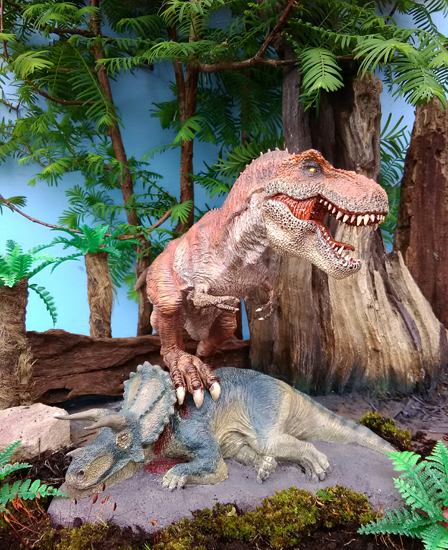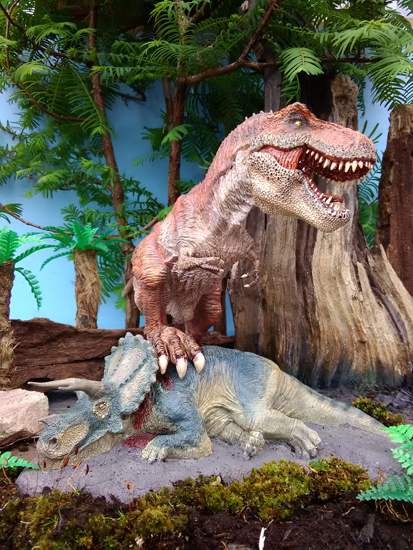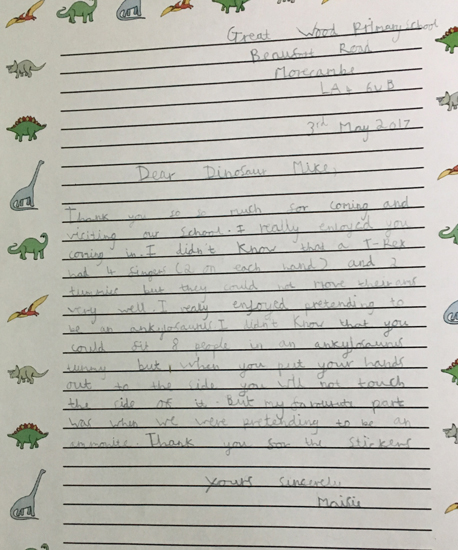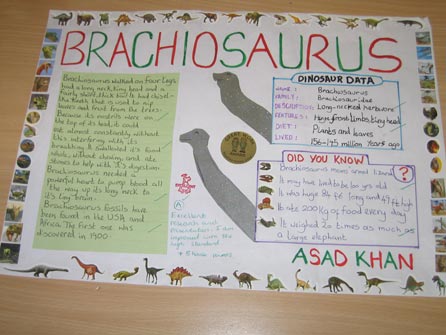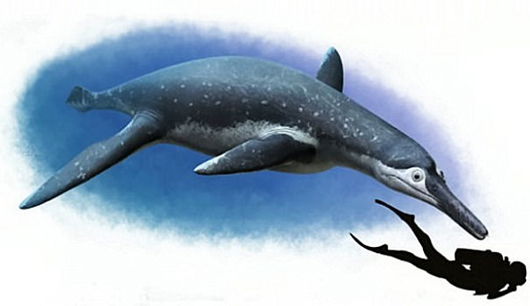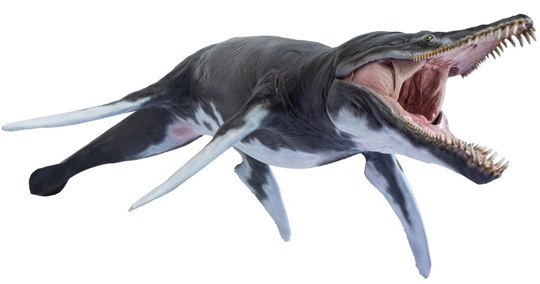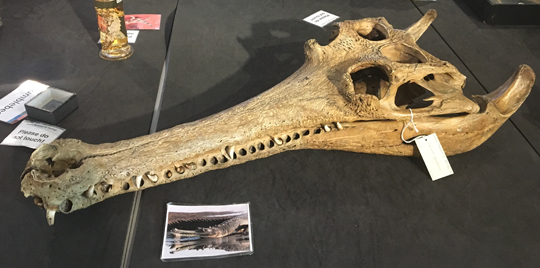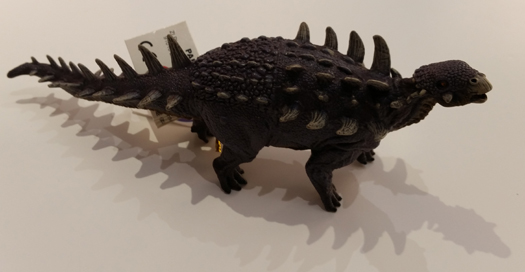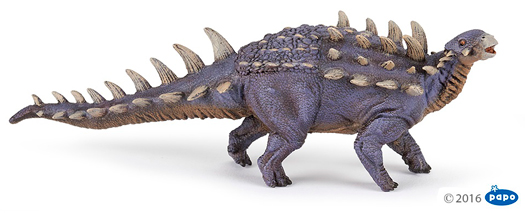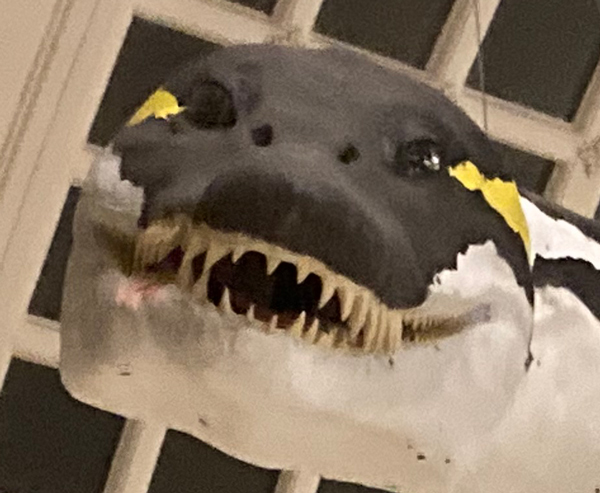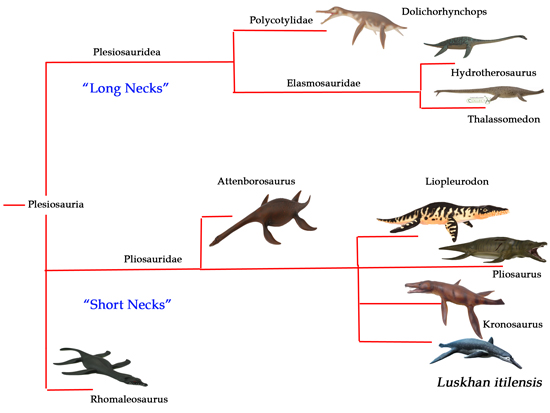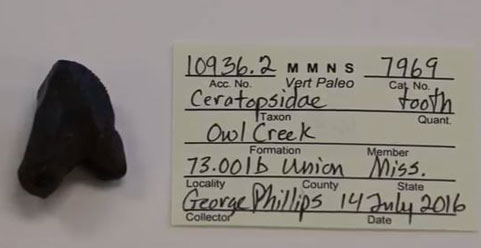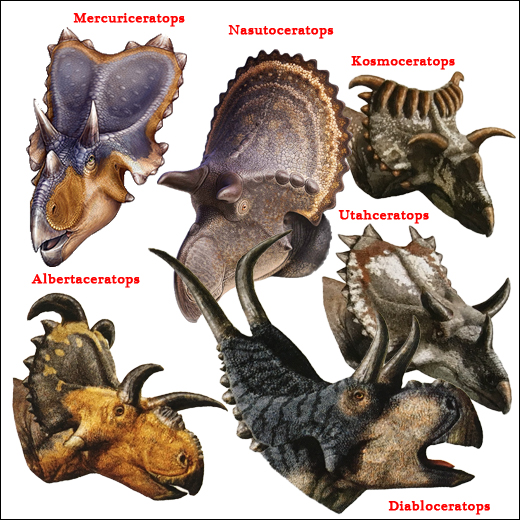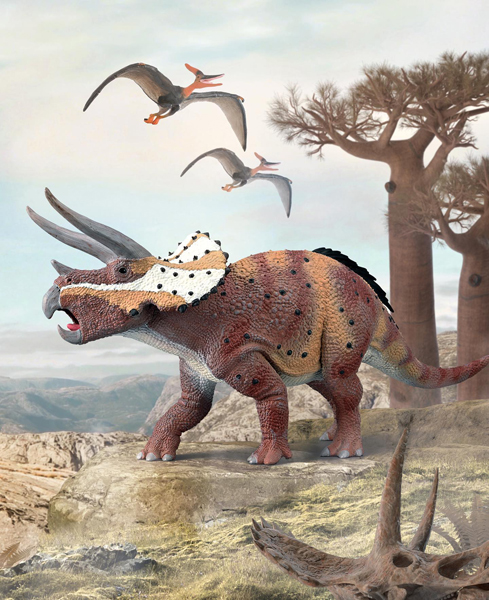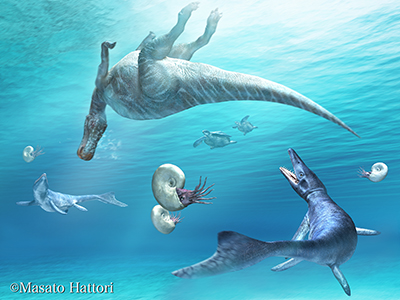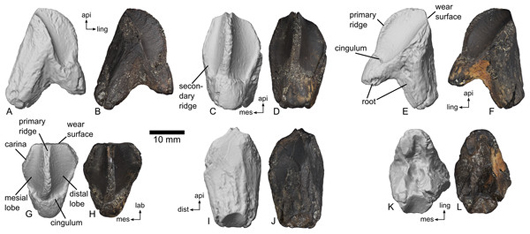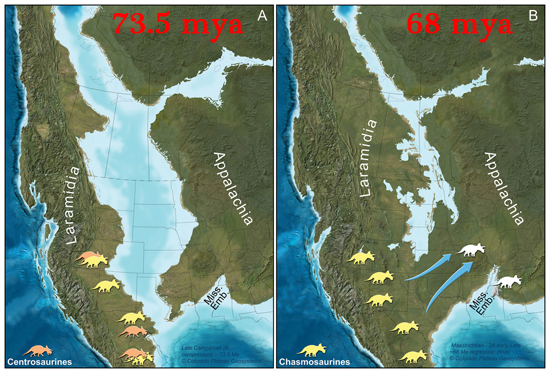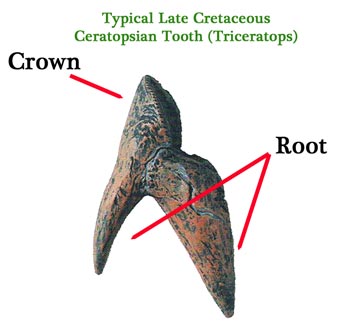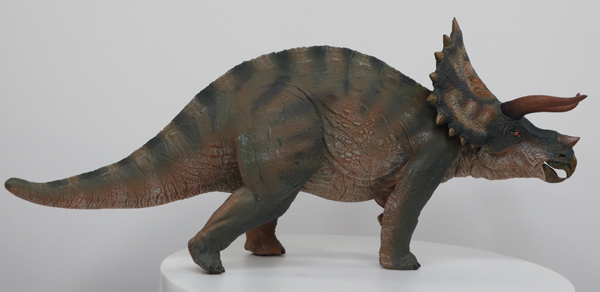Oldest Swinger in Town – Torrejonia wilsoni a Remarkable Primate Revealed by New Fossil Discoveries
New Mexico’s Oldest Primate Torrejonia wilsoni
A partial fossilised skeleton of a very ancient ancestor of humans discovered in north-western New Mexico has revealed that the first primates lived in trees and that they were not obligate ground-dwellers. More complete fossil material shows that the Palaeocene plesiadapiform known as Torrejonia wilsoni was adapted for a life in the trees. The fossil discovery is important as most of the Palaeocene mammals associated with the first primates (Euprimates) are only known from a handful of bones and isolated teeth.
The Torrejonia wilsoni Fossil Material Indicates an Arboreal Existence
Picture credit: Royal Society Open Science
The picture shows illustrations of the fossil material of T. wilsoni (specimen number NMMNH P-54500), with the bones and teeth mapped onto a line drawing of the animal. Scale bar equals 1 cm.
Box a = elements from the skull
b = parts of the jaws
c = arm bones
d = the shoulder blade (scapula- fragmentary)
e = elements from the astragalus (ankle)
Box f = leg bones
Getting into the Swing of Things Once the Dinosaurs Had Died Out
It may sound surprising, but one of the first groups of mammals to rapidly diversify and to become more specious after the extinction of the dinosaurs were the Euarchonta (tree shrews, colugos and primates). These creatures have their origins in the Late Cretaceous and with the extinction of the non-avian dinosaurs, within a few million years, a number of new Euarchonta families had evolved. The sediments that form the Early Palaeocene Nacimiento Formation (San Juan Basin, New Mexico), are one of the most important lithological units for fossils of these small mammals.
A fragmentary skeleton of the plesiadapiform Torrejonia wilsoni found in Torrejonian-aged deposits (NALMA – North American Land Mammal Ages), dating to around 62 million-years-ago, indicates that this animal had an arboreal existence. Previously, many researchers had proposed that the plesiadapiforms, an extinct group of primitive placental mammals, close to the ancestry of primates, had been terrestrial creatures. However, unlike most of the fossils associated with this group of mammals, this specimen of T. wilsoni provided scientists with key insights into the animal’s limbs and joints and a subsequent analysis revealed that it would have been at home in the trees.
Illustrations of Typical Plesiadapiforms
Picture credit: DMP (Princeton Field Guild to Prehistoric Mammals)
Torrejonia wilsoni
Dr Thomas Williamson (New Mexico Museum of Natural History and Science), one of the authors of the academic paper published today in the on-line journals of the Royal Society Open Science found the fossil material with his twin sons Ryan and Taylor. Teeth associated with the skeleton allowed the researchers to identify the fossil material as T. wilsoni, no easy task as the skeleton was found jumbled up and mixed in with two other mammals, a partial skeleton of Acmeodon secans and an almost complete skeleton of Mixodectes pungens.
Lead author of the study, Stephen Chester (University of New York) stated:
“This is the oldest partial skeleton of a plesiadapiform and it shows that they undoubtedly lived in trees. We now have anatomical evidence from the shoulder, elbow, hip, knee and ankle joints that allows us to assess where these animals lived in a way that was impossible when we only had their teeth and jaws”.
In addition, the research team contend that all of the geologically oldest primates known from skeletal remains, encompassing several species, were tree-dwellers. It seems that the plesiadapiforms, the last of which died out in the Late Eocene, had forward facing eyes and relied more on smell than living primates do. Analysis of the skeleton of Torrejonia wilsoni places plesiadapiforms as a transitional group between other mammals and the true primates.
Visit the Everything Dinosaur website: Everything Dinosaur.


